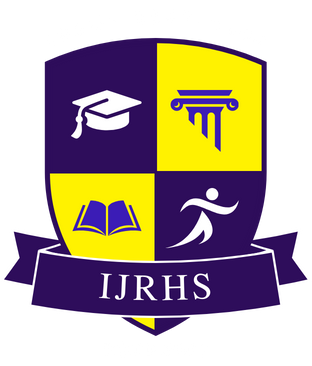![]()
DOI: https://doi.org/10.63345/ijrhs.net.v13.i5.3
Ritika Menon
Independent Researcher
Kerala, India
Abstract
This study investigates the differential outcomes of online learning when delivered in English versus regional languages within multilingual education settings. Drawing upon data from a mixed-methods design combining surveys, learning analytics, and focus group interviews among 600 undergraduate students across five Indian states, the research examines learner engagement, comprehension, academic performance, and satisfaction. Quantitative analyses reveal statistically significant advantages in comprehension and performance when courses are delivered in learners’ regional languages, while English-medium instruction shows higher levels of self-reported motivation among students aiming for global career prospects. Qualitative insights underscore the importance of cultural relevance, cognitive load, and linguistic confidence. The findings suggest that tailoring online learning content to regional languages enhances inclusivity and learning efficacy, though strategic use of English remains essential for skill development in international contexts.
Keywords
online learning, English-medium instruction, regional-language instruction, learner outcomes, multilingual education
References
- https://www.freeprojectz.com/sites/default/files/E-learning%20Management%20System%20Zero%20Level.jpeg
- https://www.researchgate.net/publication/327500292/figure/fig1/AS:668194679300103@1536321434548/Explains-the-flow-chart-of-study-as-well-as-the-variables-studied.jpg
- Baker, C. (2011). Foundations of bilingual education and bilingualism (5th ed.). Multilingual Matters.
- Cummins, J. (2000). Language, power, and pedagogy: Bilingual children in the crossfire. Multilingual Matters.
- Gao, F., Luo, T., & Zhang, K. (2013). Tweeting for learning: A critical analysis of research on microblogging in education published in 2008–2012. British Journal of Educational Technology, 44(3), 358–369. https://doi.org/10.1111/j.1467-8535.2012.01368.x
- Godwin-Jones, R. (2018). Using mobile technology to develop language skills and cultural understanding. Language Learning & Technology, 22(3), 3–17.
- Graham, C. R. (2006). Blended learning systems. In C. J. Bonk & C. R. Graham (Eds.), The handbook of blended learning: Global perspectives, local designs (pp. 3–21). Pfeiffer.
- He, J., Zhu, C., & Deneen, C. C. (2012). Student characteristics and their participation in online discussion: A study of undergraduate students enrolled in a statistics course. Computers & Education, 58(3), 914–922. https://doi.org/10.1016/j.compedu.2011.10.015
- Hew, K. F., & Cheung, W. S. (2014). Students’ and instructors’ use of massive open online courses (MOOCs): Motivations and challenges. Educational Research Review, 12, 45–58. https://doi.org/10.1016/j.edurev.2014.05.001
- Hoffstaedter, P. (2015). Teaching in two languages: The impact on students’ learning in higher education. International Journal of Bilingual Education and Bilingualism, 18(6), 754–771. https://doi.org/10.1080/13670050.2014.948694
- Huang, R. H., & Hew, K. F. (2018). Implementing online learning in secondary schools: Insights from a MOOC-based pilot project in China. Educational Technology Research and Development, 66(1), 201–221. https://doi.org/10.1007/s11423-017-9535-0
- Kern, R. (2014). Technology-integrated language teaching: Reconceptualizing the role of technology. Annual Review of Applied Linguistics, 34, 16–34. https://doi.org/10.1017/S0267190513000347
- Kirschner, P. A., & van Merriënboer, J. J. G. (2013). Do learners really know best? Urban legends in education. Educational Psychologist, 48(3), 169–183. https://doi.org/10.1080/00461520.2013.804395
- Kop, R., & Fournier, H. (2011). New dimensions to self-directed learning in an open networked learning environment. International Journal of Self-Directed Learning, 8(2), 1–12.
- Kunnan, A. J. (2004). Validation and validation practices: A literature review. Language Assessment Quarterly, 1(1), 3–30. https://doi.org/10.1207/s15434311laq0101_2
- Li, C., Yu, S., Yang, F., Gong, Z., & Wang, C. (2020). Native-language delivery versus English-only delivery: Impacts on MOOC completion and performance. Computers & Education, 159, 104010. https://doi.org/10.1016/j.compedu.2020.104010
- Lin, T.-B., & Warschauer, M. (2015). The role of language in Asia’s online learning. Asia Pacific Journal of Education, 35(3), 295–311. https://doi.org/10.1080/02188791.2015.1052579
- Rahman, M. M., & Karim, M. R. (2019). English proficiency and STEM online learning: A study of Bangladeshi undergraduates. Journal of Online Learning Research, 5(4), 267–291.
- Selvi, A. F., & Aydin, S. (2017). Localization of digital learning materials: Effects on student satisfaction and achievement. Journal of Educational Technology Systems, 46(3), 345–363. https://doi.org/10.1177/0047239516648159
- Swain, M., & Lapkin, S. (2013). A Vygotskian sociocultural perspective on immersion education: The L2 user’s role in a multilingual community. International Journal of Bilingual Education and Bilingualism, 16(3), 313–325. https://doi.org/10.1080/13670050.2012.744949
- Zheng, L., Yin, C., & Han, J. (2018). Learner engagement and language choice in online language learning environments. Computer Assisted Language Learning, 31(5–6), 531–549. https://doi.org/10.1080/09588221.2018.1440025
